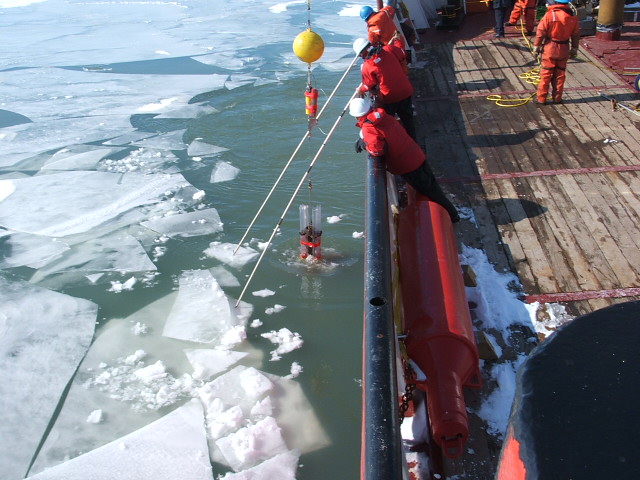Reprinted from www.GreatLakesEcho.org
Potsdam, NY, January 24, 2012 - The Great Lakes are difficult to study during the winter. It’s cold, the ice is thick and there probably isn’t much going on under there, right?
Wrong.
Clarkson University biologist Michael Twiss and other Great Lakes scientists have discovered there is a lot going on under the ice.
“When I was working up in Canada, I won a grant to use the coast guard vessel to study for a week,” Twiss said. “I wanted to use it as late in the season as possible, which was November. We found a lot of interesting stuff. “
Among the things he discovered is a high concentration of algae in Lake Erie during the winter. That’s unlike spring when there are almost no algae present.
And it is an important discovery because algae growth has been linked to the creation of Lake Erie dead zones devoid of oxygen.
The Canadian Coast Guard provides Twiss and his team with an ice breaker. Their research is supported by the New York and Ohio Sea Grant organizations.
Each year the team loads the ice breaker with supplies. Since it is not a vessel normally used to conduct scientific research, they have to bring everything with them, Twiss said.

Environment Canada and Canadian Coast Guard personnel recover a sediment trap from an icebreaker on an ice-covered Lake Erie in February 2010. Sediment traps are placed on the bottom of a lake to measure the how much algae sink to the bottom. In this case, algae are thriving in winter below ice.
Photo by Michael Twiss, Clarkson University
The journey begins in Amherstburg, Ontario, and ends at Lake Erie’s eastern basin not far from Buffalo. They collect random samples of water throughout the journey, he said.
“The amount of algae in the winter shows that we have to study Lake Erie during the winter time in order to understand it in the summertime,” Twiss said. “It’s hard because there isn’t any data to compare it to and it takes a while to create a hypothesis. There is almost no data from the lake in the winter time.”
The information is especially important for efforts to shrink the dead zone.
“When the algae dies, it sinks to the bottom of the lake and contributes to the dead zone,” said Jeffrey Reutter, director of Ohio Sea Grant. “Historically, there is not work done on lakes in winter, simply because information is more difficult to collect. This is new and invaluable information when looking at the dead zone.”
Cornelia Schlenk, the assistant director of New York Sea Grant, said that agency supports the research because of its strategic plan to improve coastal water quality.
“No one thought about what was happening in the winter, so it’s a really unique project” Schlenk said. “Turns out, the phytoplankton growing in the winter time really does have an effect on the dead zone.”
Just how to stop or reduce the winter bloom is still unknown, Schlenk said. But the research Twiss and his colleagues are doing is getting published and put in the hands of the people who can use it.
But mysteries remain.
“We still need to get a bigger picture,” she said. “We need to know what’s happening in the fall.”
For more on this project, search
NYSG's Research Database - You can best find it by searching by Institution (Clarkson University), Investigator (Dr. Michael R. Twiss).
New York Sea Grant (NYSG), a statewide network of integrated research, education, and extension services promoting the coastal economic vitality, environmental sustainability and citizen awareness about the State’s marine and Great Lakes resources, has been “Bringing Science to the Shore” for over 40 years. NYSG, one of 32 university-based programs under the National Sea Grant College Program of the National Oceanic and Atmospheric Administration (NOAA), is a cooperative program of the State University of New York and Cornell University. The National Sea Grant College Program engages this network of the nation’s top universities in conducting scientific research, education, training, and extension projects designed to foster science-based decisions about the use and conservation of our aquatic resources.